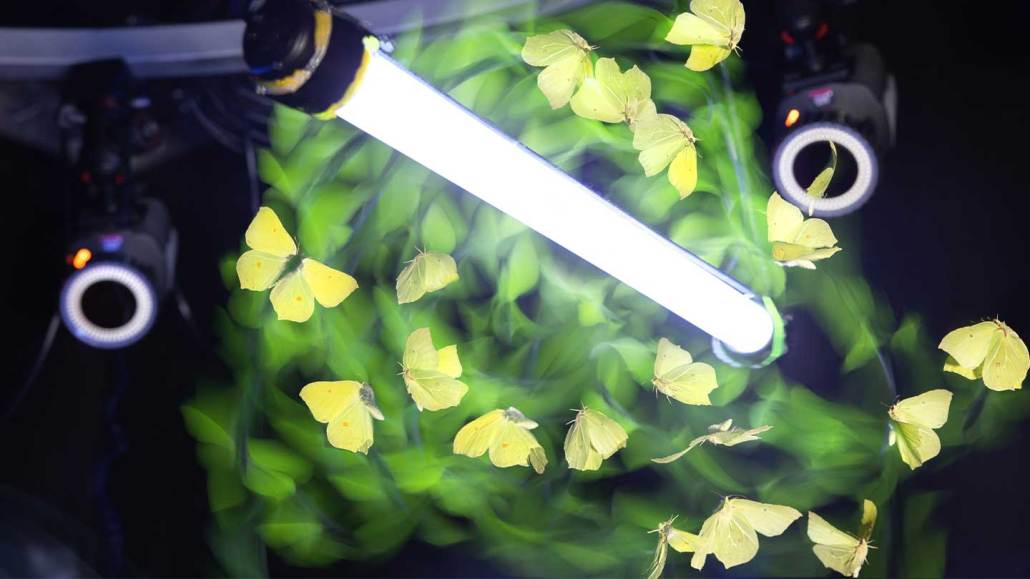Questions for ‘Which way is up? Insects may lose track near artificial lights’

A brimstone butterfly (Gonepteryx rhamni) is shown in multiple locations using motion-capture. The insect appears to try to keep its back toward a tube light as it flits around. This may explain why flying insects seem to lose their sense of direction around artificial lights.
Thomas Angus